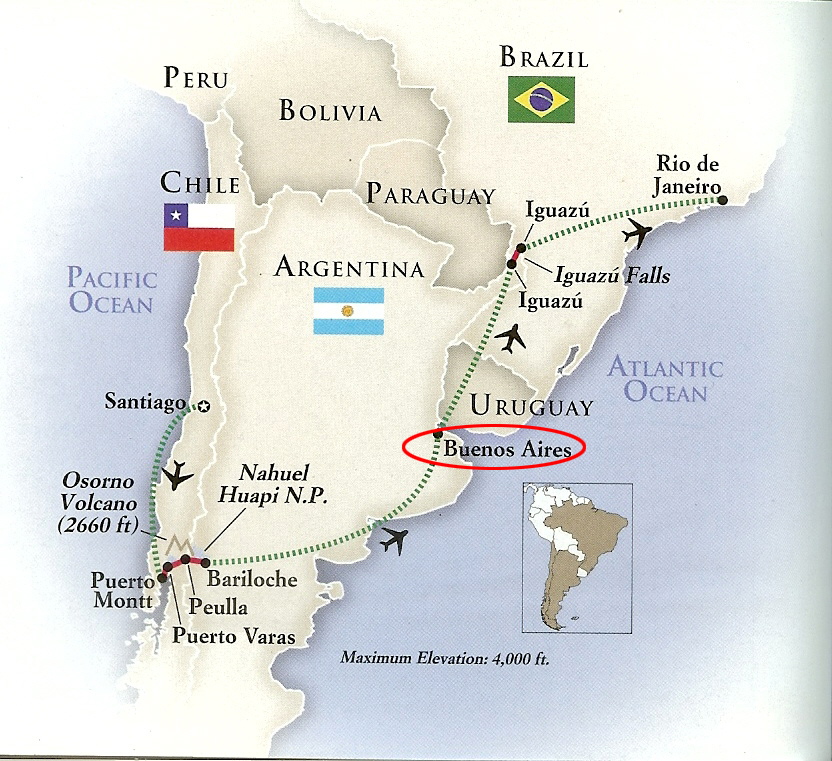South America: Buenos Aires Cityscapes Part 2 - Plaza De Mayo
Mar 13, 2022 17:21:28 #
We continued our morning tour of the city with a walking tour of the Paza de Mayo led by a very knowledgeable local guide. The memorable sites were the Casa Rosada and the Metropolitan Cathedral (subject of a future post).
The Plaza de Mayo (Spanish pronunciation: [ˈplasa ðe ˈmaʝo]; English: May Square) is a city square and main foundational site of Buenos Aires, Argentina. It was formed in 1884 after the demolition of the Recova building, unifying the city's Plaza Mayor and Plaza de Armas, by that time known as Plaza de la Victoria and Plaza 25 de Mayo, respectively. The city centre of Buenos Aires, Plaza de Mayo has been the scene of the most momentous events in Argentine history, as well as the largest popular demonstrations in the country. On the occasion of the first anniversary of the May Revolution in 1811, the Pirámide de Mayo (English: May Pyramid) was inaugurated in the square's hub, becoming Buenos Aires' first national monument.
It is located in the financial district known as microcentro, within the barrio (English: neighborhood) of Monserrat. It is bounded by Bolívar, Hipólito Yrigoyen, Balcarce and Avenida Rivadavia streets; and from its west side three important avenues are born: Avenida Presidente Julio Argentino Roca, Avenida Roque Sáenz Peña and Avenida de Mayo. In the square's surroundings are several significant monuments and points of interest: the Cabildo, the Casa Rosada (seat of the President of Argentina), the Metropolitan Cathedral, the Buenos Aires City Hall, and the Bank of the Argentine Nation's headquarters. Underneath its lands are the Underground stations of Plaza de Mayo (Line A), Catedral (Line D), and Bolívar (Line E).
The modern plaza took form in 1884 when the colonnade separating the Plaza de la Victoria and the Plaza del Fuerte was demolished. Its origins, however, can be traced back to Juan de Garay's foundation of Buenos Aires itself, in 1580. Newly arrived to the dusty riverbank settlement, Jesuit clergymen in 1608 secured a title to much of the 2 hectares (4.9 acres) lot, on which Garay's earlier plans for a central plaza had been abandoned. In 1661, the local governor purchased the eastern half for inclusion into the grounds of the city's new fort; this section soon became the Plaza de Armas.
Following over a century of overuse and neglect, the local colonial government attempted to give a semblance of order to the plaza by having a colonnade built across it from north to south. Completed in 1804, the Romanesque structure became the plaza's market and the lot to the west of the colonnade became the Plaza de la Victoria. The area continued divided between these two plazas until 1883 and with only minor changes in landscaping, chief among them the 1811 addition of the May Pyramid, a monument put up to commemorate the newly independent "Provinces of the Rio de la Plata". That year, however, Mayor Torcuato de Alvear ordered the space modernized, resulting in the resulting in the colonnade's demolition and the creation of the modern Plaza de Mayo.
https://en.wikipedia.org/wiki/Plaza_de_Mayo
THE CASA ROSADA (Spanish pronunciation: [ˈkasa roˈsaða], English: Pink House) is the office of the President of Argentina. The palatial mansion is known officially as Casa de Gobierno ("House of Government" or "Government House"). Normally, the President lives at the Quinta de Olivos, the official residence of the President of Argentina, which is located in Olivos, Greater Buenos Aires. The characteristic color of the Casa Rosada is baby pink, and is considered one of the most emblematic buildings in Buenos Aires. The building also houses a museum, which contains objects relating to former presidents of Argentina. It has been declared a National Historic Monument of Argentina.
The Casa Rosada sits at the eastern end of the Plaza de Mayo, a large square which since the 1580 foundation of Buenos Aires has been surrounded by many of the most important political institutions of the city and of Argentina. The site, originally at the shoreline of the Río de la Plata, was first occupied by the "Fort of Juan Baltazar of Austria", a structure built on the orders of the founder of Buenos Aires, Captain Juan de Garay, in 1594. Its 1713 replacement by a masonry structure (the "Castle of San Miguel") complete with turrets made the spot the effective nerve center of colonial government. Following independence, President Bernardino Rivadavia had a Neoclassical portico built at the entrance in 1825, and the building remained unchanged until, in 1857, the fort was demolished in favor of a new customs building. Under the direction of British Argentine architect Edward Taylor, the Italianate structure functioned as Buenos Aires' largest building from 1859 until the 1890s.
The old fort's administrative annex, which survived the construction of Taylor's Customs House, was enlisted as the Presidential offices by Bartolomé Mitre in the 1860s and his successor, Domingo Sarmiento, who beautified the drab building with patios, gardens and wrought-iron grillwork, had the exterior painted pink reportedly in order to defuse political tensions by mixing the red and white colors of the country's two opposing political parties: red was the color of the Federalists, while white was the color of the Unitarians. An alternative explanation suggests that the original paint contained cow's blood to prevent damage from the effects of humidity. Sarmiento also authorized the construction of the Central Post Office next door in 1873, commissioning Swedish Argentine architect Carl Kihlberg, who designed this, one of the first of Buenos Aires' many examples of Second Empire architecture.
Presiding over an unprecedented socio-economic boom, President Julio Roca commissioned architect Enrique Aberg to replace the cramped State House with one resembling the neighboring Central Post Office in 1882. Following works to integrate the two structures, Roca had architect Francesco Tamburini build the iconic Italianate archway between the two in 1884. The resulting State House, still known as the "Rose House", was completed in 1898 following its eastward enlargement, works which resulted in the destruction of the customs house.
A Historical Museum was created in 1957 to display presidential memorabilia and selected belongings, such as sashes, batons, books, furniture, and three carriages. The remains of the former fort were partially excavated in 1984-85, and the uncovered structures were incorporated into the Museum of the Casa Rosada. Located behind the building, these works led to the rerouting of Paseo Colón Avenue, unifying the Casa Rosada with Parque Colón (Columbus Park) behind it. Plans were announced in 2009 for the restoration of surviving portions of Taylor's Customs House, as well.
The Casa Rosada itself in 2006 underwent extensive renovation delayed by the 2001 economic crisis. The first phase was completed for the 2010 bicentennial of the May Revolution that led to independence, with a second phase begun in 2017.
https://en.wikipedia.org/wiki/Casa_Rosada
For more images and a narrative on Buenos Aires, please see my previous post: https://www.uglyhedgehog.com/t-732104-1.html#12994158
I hope you enjoy them!
Mark
The Plaza de Mayo (Spanish pronunciation: [ˈplasa ðe ˈmaʝo]; English: May Square) is a city square and main foundational site of Buenos Aires, Argentina. It was formed in 1884 after the demolition of the Recova building, unifying the city's Plaza Mayor and Plaza de Armas, by that time known as Plaza de la Victoria and Plaza 25 de Mayo, respectively. The city centre of Buenos Aires, Plaza de Mayo has been the scene of the most momentous events in Argentine history, as well as the largest popular demonstrations in the country. On the occasion of the first anniversary of the May Revolution in 1811, the Pirámide de Mayo (English: May Pyramid) was inaugurated in the square's hub, becoming Buenos Aires' first national monument.
It is located in the financial district known as microcentro, within the barrio (English: neighborhood) of Monserrat. It is bounded by Bolívar, Hipólito Yrigoyen, Balcarce and Avenida Rivadavia streets; and from its west side three important avenues are born: Avenida Presidente Julio Argentino Roca, Avenida Roque Sáenz Peña and Avenida de Mayo. In the square's surroundings are several significant monuments and points of interest: the Cabildo, the Casa Rosada (seat of the President of Argentina), the Metropolitan Cathedral, the Buenos Aires City Hall, and the Bank of the Argentine Nation's headquarters. Underneath its lands are the Underground stations of Plaza de Mayo (Line A), Catedral (Line D), and Bolívar (Line E).
The modern plaza took form in 1884 when the colonnade separating the Plaza de la Victoria and the Plaza del Fuerte was demolished. Its origins, however, can be traced back to Juan de Garay's foundation of Buenos Aires itself, in 1580. Newly arrived to the dusty riverbank settlement, Jesuit clergymen in 1608 secured a title to much of the 2 hectares (4.9 acres) lot, on which Garay's earlier plans for a central plaza had been abandoned. In 1661, the local governor purchased the eastern half for inclusion into the grounds of the city's new fort; this section soon became the Plaza de Armas.
Following over a century of overuse and neglect, the local colonial government attempted to give a semblance of order to the plaza by having a colonnade built across it from north to south. Completed in 1804, the Romanesque structure became the plaza's market and the lot to the west of the colonnade became the Plaza de la Victoria. The area continued divided between these two plazas until 1883 and with only minor changes in landscaping, chief among them the 1811 addition of the May Pyramid, a monument put up to commemorate the newly independent "Provinces of the Rio de la Plata". That year, however, Mayor Torcuato de Alvear ordered the space modernized, resulting in the resulting in the colonnade's demolition and the creation of the modern Plaza de Mayo.
https://en.wikipedia.org/wiki/Plaza_de_Mayo
THE CASA ROSADA (Spanish pronunciation: [ˈkasa roˈsaða], English: Pink House) is the office of the President of Argentina. The palatial mansion is known officially as Casa de Gobierno ("House of Government" or "Government House"). Normally, the President lives at the Quinta de Olivos, the official residence of the President of Argentina, which is located in Olivos, Greater Buenos Aires. The characteristic color of the Casa Rosada is baby pink, and is considered one of the most emblematic buildings in Buenos Aires. The building also houses a museum, which contains objects relating to former presidents of Argentina. It has been declared a National Historic Monument of Argentina.
The Casa Rosada sits at the eastern end of the Plaza de Mayo, a large square which since the 1580 foundation of Buenos Aires has been surrounded by many of the most important political institutions of the city and of Argentina. The site, originally at the shoreline of the Río de la Plata, was first occupied by the "Fort of Juan Baltazar of Austria", a structure built on the orders of the founder of Buenos Aires, Captain Juan de Garay, in 1594. Its 1713 replacement by a masonry structure (the "Castle of San Miguel") complete with turrets made the spot the effective nerve center of colonial government. Following independence, President Bernardino Rivadavia had a Neoclassical portico built at the entrance in 1825, and the building remained unchanged until, in 1857, the fort was demolished in favor of a new customs building. Under the direction of British Argentine architect Edward Taylor, the Italianate structure functioned as Buenos Aires' largest building from 1859 until the 1890s.
The old fort's administrative annex, which survived the construction of Taylor's Customs House, was enlisted as the Presidential offices by Bartolomé Mitre in the 1860s and his successor, Domingo Sarmiento, who beautified the drab building with patios, gardens and wrought-iron grillwork, had the exterior painted pink reportedly in order to defuse political tensions by mixing the red and white colors of the country's two opposing political parties: red was the color of the Federalists, while white was the color of the Unitarians. An alternative explanation suggests that the original paint contained cow's blood to prevent damage from the effects of humidity. Sarmiento also authorized the construction of the Central Post Office next door in 1873, commissioning Swedish Argentine architect Carl Kihlberg, who designed this, one of the first of Buenos Aires' many examples of Second Empire architecture.
Presiding over an unprecedented socio-economic boom, President Julio Roca commissioned architect Enrique Aberg to replace the cramped State House with one resembling the neighboring Central Post Office in 1882. Following works to integrate the two structures, Roca had architect Francesco Tamburini build the iconic Italianate archway between the two in 1884. The resulting State House, still known as the "Rose House", was completed in 1898 following its eastward enlargement, works which resulted in the destruction of the customs house.
A Historical Museum was created in 1957 to display presidential memorabilia and selected belongings, such as sashes, batons, books, furniture, and three carriages. The remains of the former fort were partially excavated in 1984-85, and the uncovered structures were incorporated into the Museum of the Casa Rosada. Located behind the building, these works led to the rerouting of Paseo Colón Avenue, unifying the Casa Rosada with Parque Colón (Columbus Park) behind it. Plans were announced in 2009 for the restoration of surviving portions of Taylor's Customs House, as well.
The Casa Rosada itself in 2006 underwent extensive renovation delayed by the 2001 economic crisis. The first phase was completed for the 2010 bicentennial of the May Revolution that led to independence, with a second phase begun in 2017.
https://en.wikipedia.org/wiki/Casa_Rosada
For more images and a narrative on Buenos Aires, please see my previous post: https://www.uglyhedgehog.com/t-732104-1.html#12994158
I hope you enjoy them!
Mark
Keeping my promise to UTMike, Gail in front of the Casa Rosada
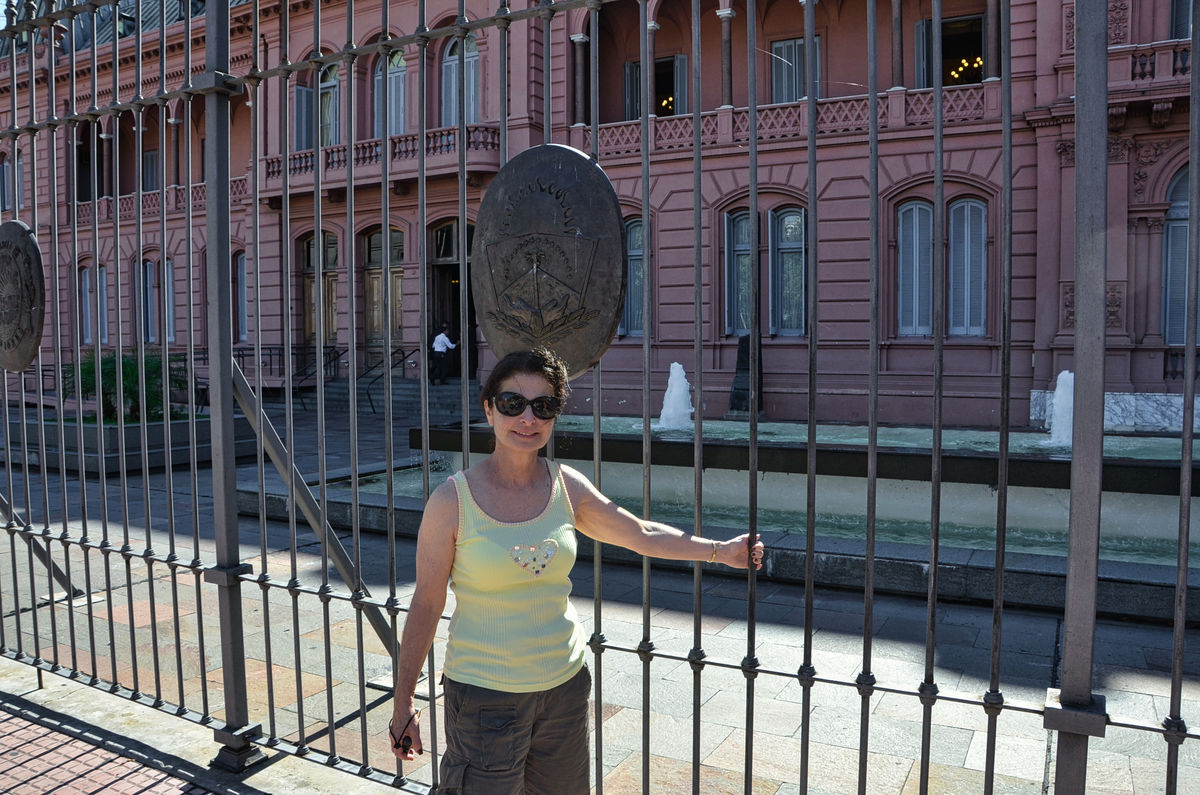
(Download)
Plaza De Mayo looking west.
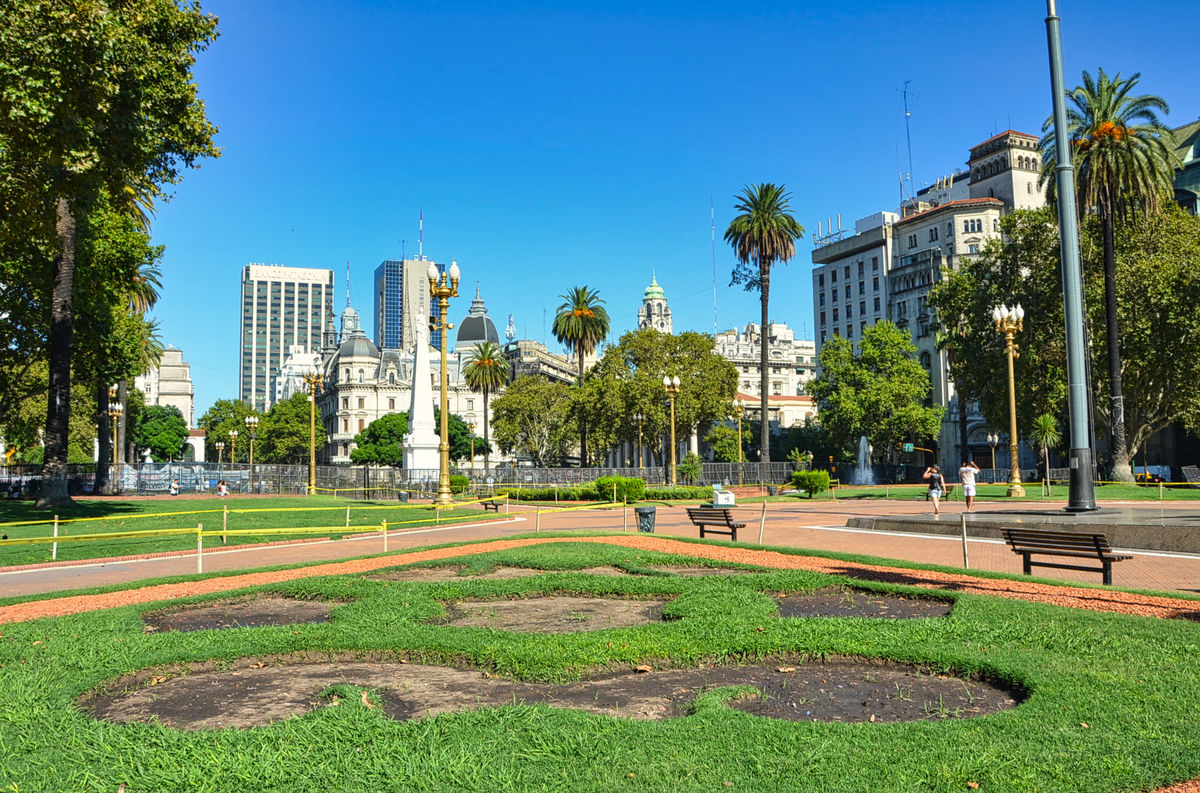
(Download)
Looking east at the Casa Rosada
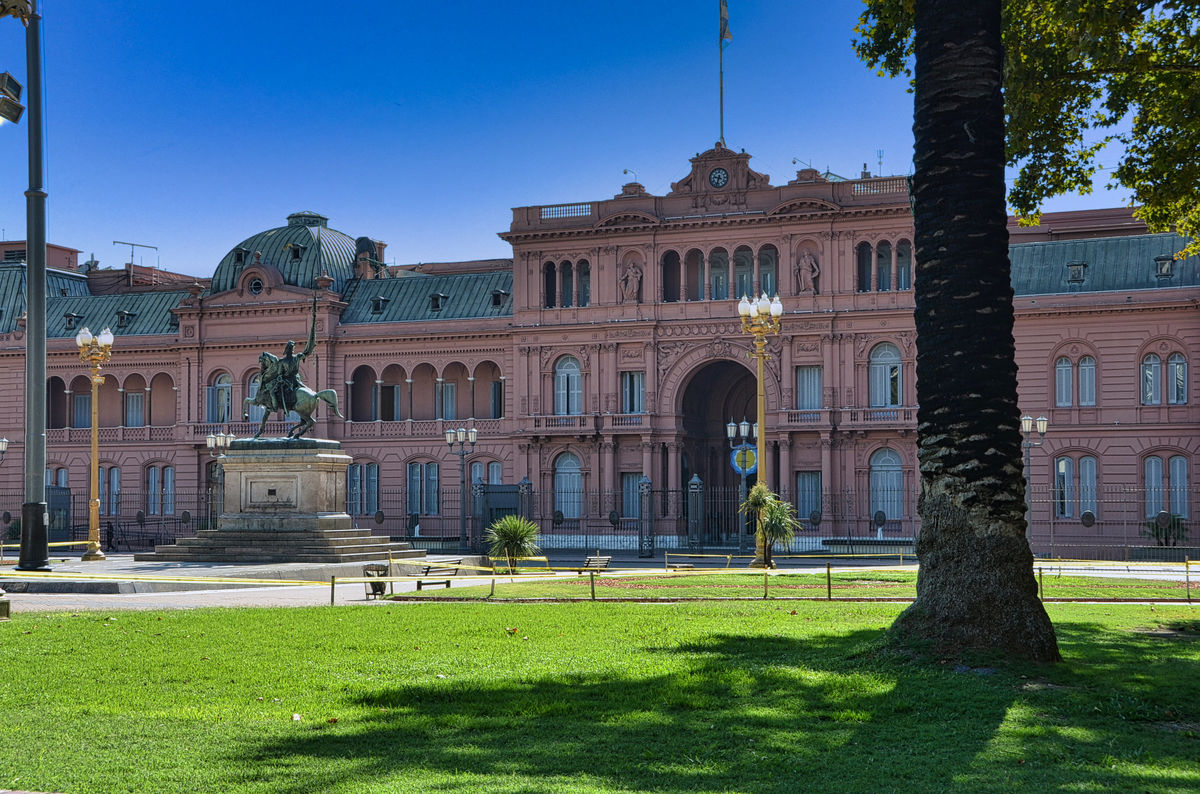
(Download)
The Plaza de Mayo is the scene of many protests
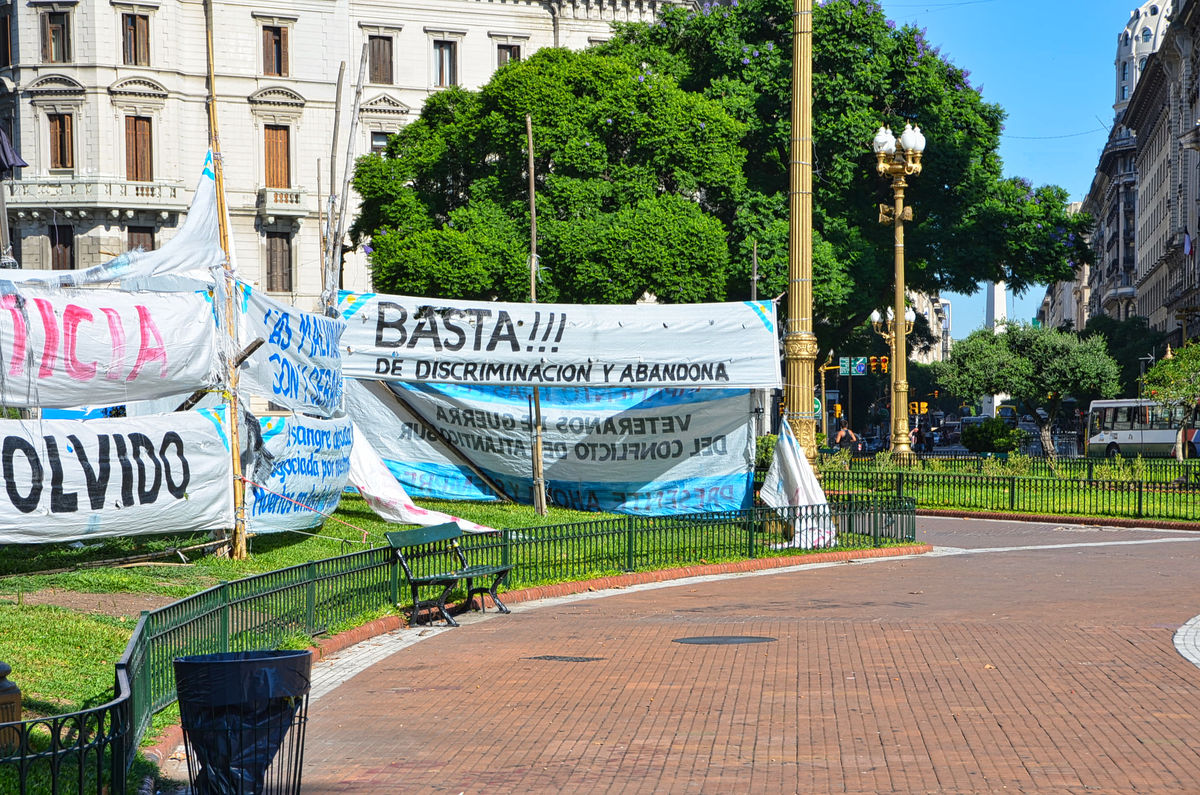
(Download)
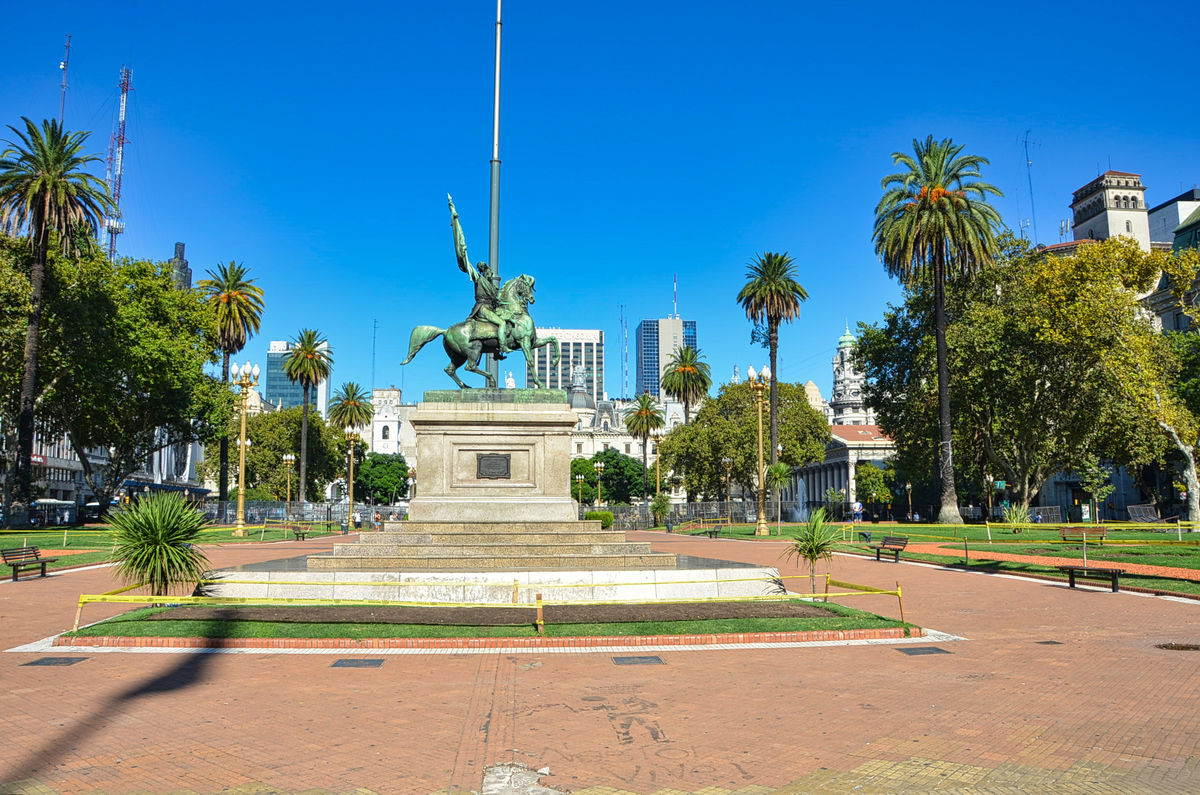
(Download)
The balcony where Presidents as well as Eva Peron addressed the people, featured in the film "Evita"
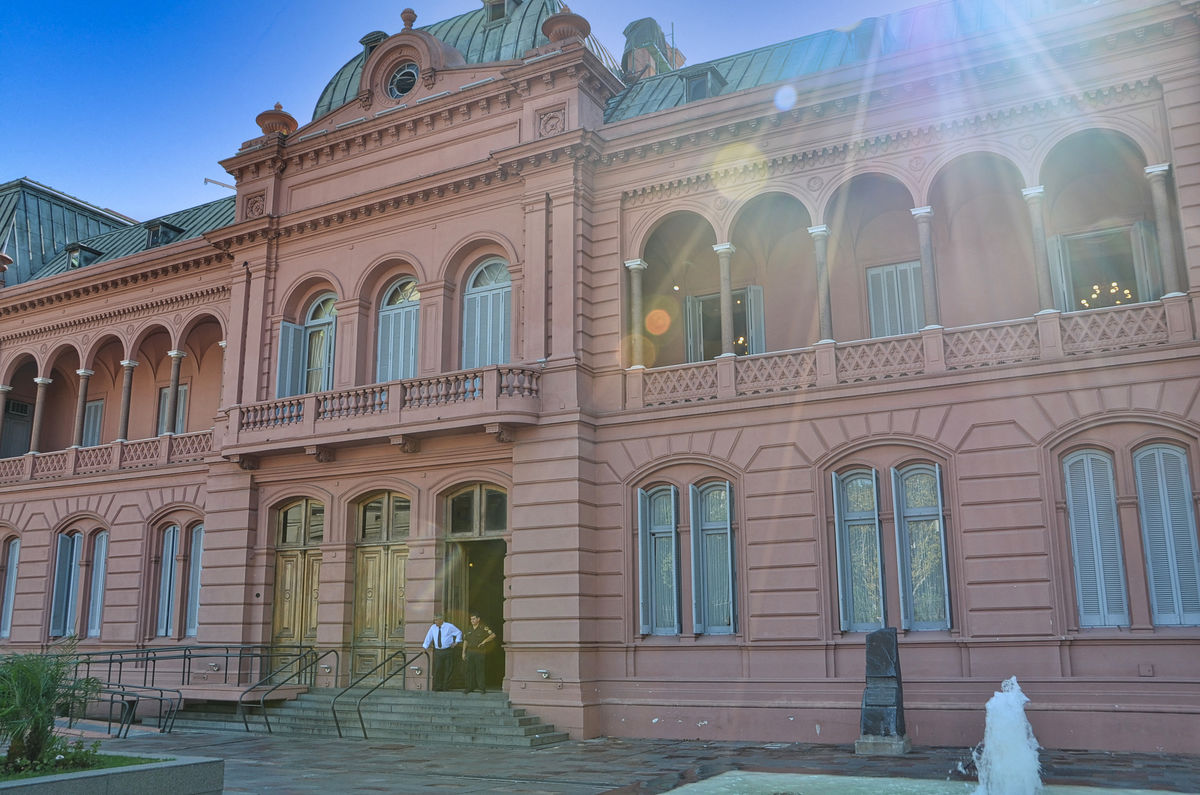
(Download)
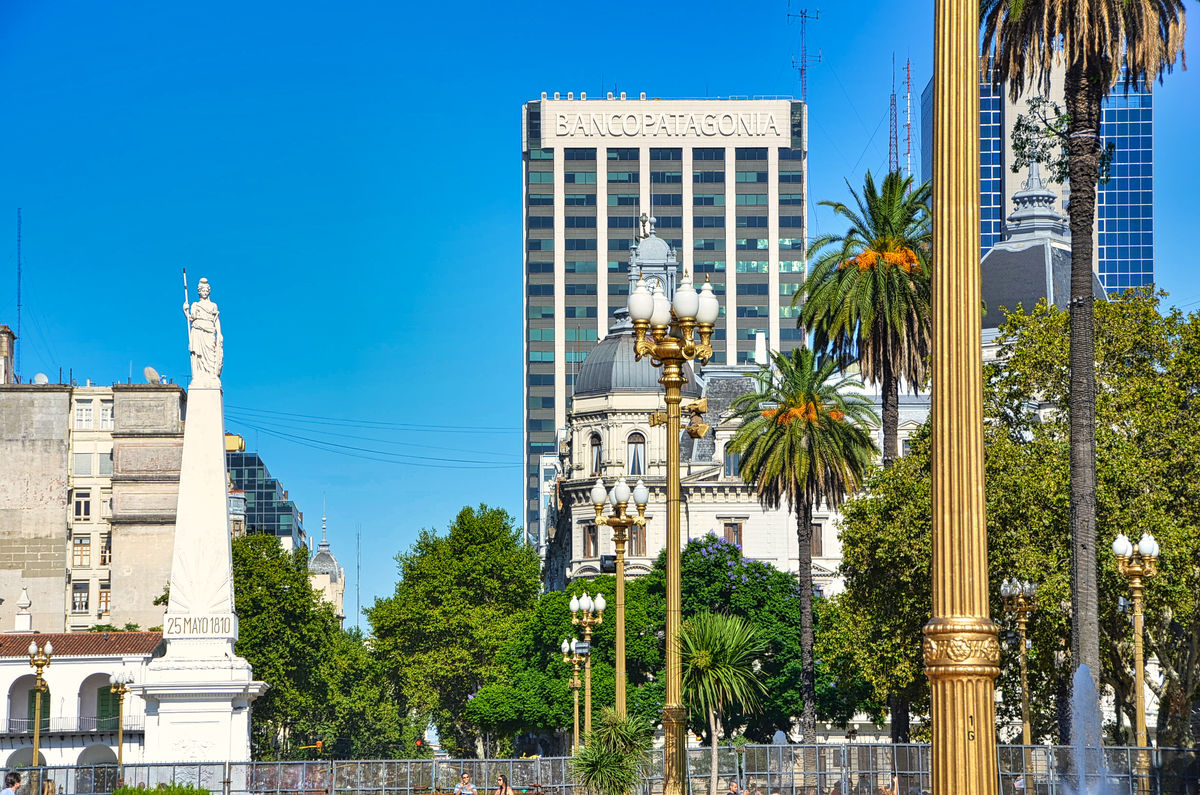
(Download)
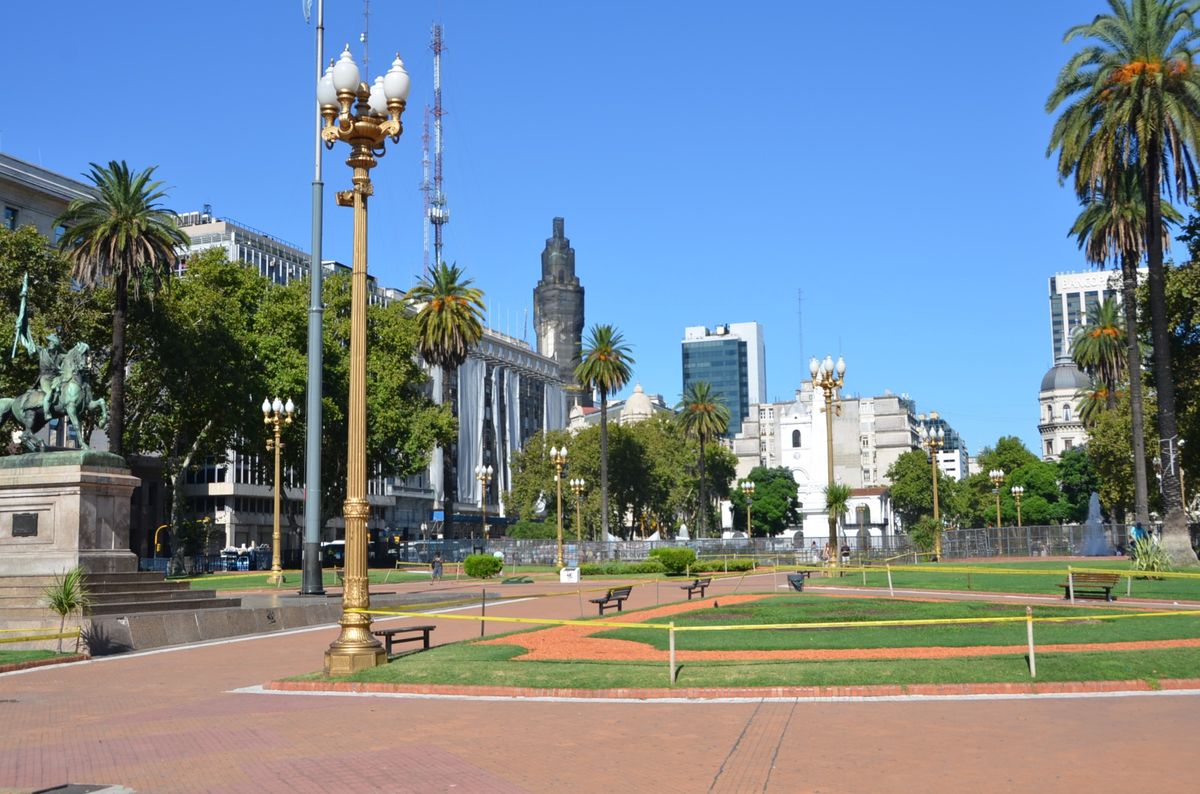
(Download)
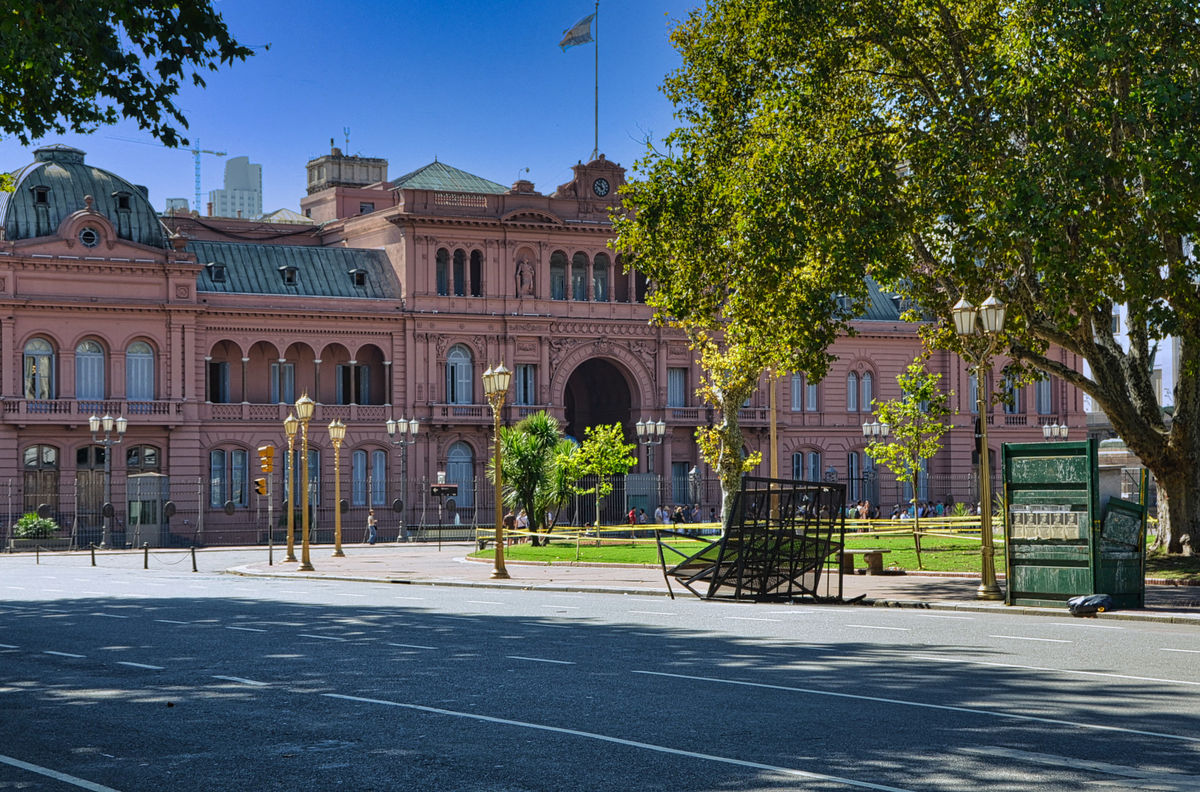
(Download)
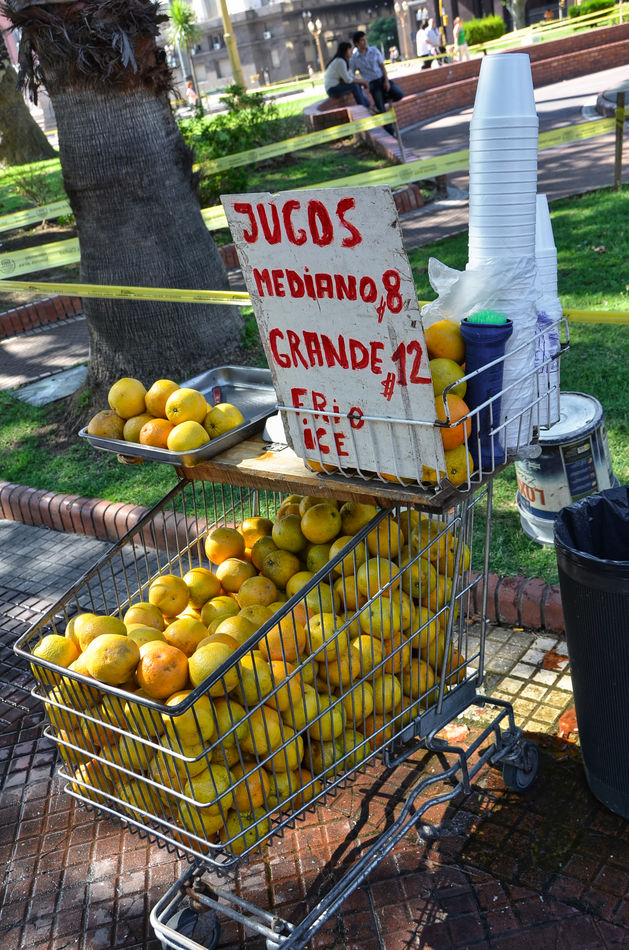
(Download)
Mar 13, 2022 17:27:57 #
Mar 13, 2022 17:28:50 #
Mar 13, 2022 17:34:29 #
Mar 13, 2022 18:53:44 #
Mar 13, 2022 19:03:14 #
Mar 13, 2022 19:56:00 #
Mar 13, 2022 19:56:30 #
Mar 13, 2022 20:13:57 #
Mar 13, 2022 20:39:50 #
kpmac wrote:
Beautiful, Mark. And Mike knows what to ask for.
Thanks very much Ken. I hope he's happy!


Mar 13, 2022 20:51:47 #
srfmhg wrote:
We continued our morning tour of the city with a w... (show quote)
Another excellent set Mark. I'm enjoying the tour.
Mar 14, 2022 07:09:27 #
Mar 14, 2022 07:11:16 #
Mar 14, 2022 07:25:11 #
Mar 14, 2022 07:53:20 #
If you want to reply, then register here. Registration is free and your account is created instantly, so you can post right away.


